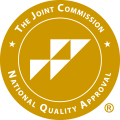By Dr. Michael Genovese, M.D., J.D.
Chief Medical Officer at Acadia Healthcare
Imagine the path of a person becoming a CIA analyst. It took a bachelor’s degree in political science, a master’s in international relations, and the cultivation of key relationships from prestigious internships to land this highly coveted position. After all that hard work, he made it to Langley.
His specialty is counterintelligence. He parses mounds of data and loads of surveillance to detect both domestic and foreign threats. He thrives on taking fragments of information and forming them into cohesive evidence. He’s very good at what he does.
Until one day, a call comes in. They need him in the field. There’s an accelerating situation overseas with an arms dealer based on intelligence he’s gathered, and that subject matter expertise means the agency needs his boots on the ground to ensure proper de-escalation.
It’s a scenario even Jack Ryan would say he’s unequipped to handle. Despite years of education and thousands of hours of training, our analyst heads for a potentially perilous situation without the proper resources and preparation.
***
For tactical law enforcement officers, the idea of being in a situation they’re not fully prepared to handle is far too common. At their core, tactical law enforcement officers have similar duties to other police officers: most notably, protecting the public. But specialty units, such as SWAT teams, are often the first responders to dangerous situations. They’re trained to go into high-risk operations, de-escalate the threat, and resolve a crisis with minimal casualties.
What they’re almost never trained to do is effectively handle a person who is undergoing a behavioral health crisis. Considering that 10% of police calls involve someone who is mentally ill, that’s a pretty significant problem[1].
How officers react to these calls is critical. How those who first respond to the scene of a crisis arrive – and what they do and say in the moments that follow – can quite literally be a life-and-death situation.
There have been more and more initiatives set in place in recent years to address overcoming the stigma of mental health in law enforcement officers[2]. That’s a significant step toward ensuring that those charged with keeping the public safe take care of themselves in what can be a highly stressful career.
But we need to do more than just promote positive mental health within the field of law enforcement. We need to train those who are most likely to respond to crisis situations on what to look for in the individuals at the center of a disturbance. We need to provide education around the most common symptoms surrounding those suffering from a behavioral health crisis. If a person in a high-stress situation says they’re considering suicide, we must consider that threat very real and give officers the tools they need to de-escalate and get that individual proper medical attention.
We don’t need every tactical law enforcement officer to become a psychiatrist on the front line. But for a few moments, we need them to think like one.
To do that, they’ll need our help.
Setting the Stage for Proper De-Escalation
One in 50 adults in the United States have an untreated severe mental illness[3]. Yet those individuals are involved in at least a quarter and as many as half of all police shootings in our country.
In some cases, tactical officers responding to a crisis may know before arriving at a scene that a person is struggling with a mental illness. In others, it may be unclear. But before even beginning to de-escalate the situation, the initial approach from officers who tend to be heavily armed is critical in setting the tone.
Take Chicago, for example. The nation’s third-largest city has closed half of its public mental health clinics since 2012. All the while, SWAT team deployments to respond to mental health incidents and suicide attempts have picked up, signaling a militarized response to behavioral health crises. That reaction – a fleet of heavily armed officers, tanklike vehicles, and potentially air support – threatens to escalate the very incidents police are there to resolve.
“If a person is suicidal, they need help, obviously, but they might not be easily open at that point,” Dr. Daniela Kantorová, a clinical psychologist at California’s Wright Institute, told The Intercept in 2017[4]. “If police and a SWAT team show up, that person could become more agitated or start acting in a way that could be more erratic, they could act in a way that could appear aggressive to the cops. Then that can also increase the danger of them getting killed.”
Understanding What Those in Crises Are up Against
As we covered earlier, our first responders don’t need a Ph.D. in order to properly handle a crisis involving someone who may be dealing with mental illness. But by training them in common situations, these tactical officers can learn to recognize the specific traits behind individuals who say they’re suicidal.
It starts by taking every report of a person experiencing suicidal ideation at face value. It’s crucial to not enter a situation assuming the person in crisis is merely seeking attention or having a bad day.
There are four mental disorders – some of which share common traits – that tactical officers most commonly encounter in a crisis situation. By starting here in educating our first responders, we can make significant strides toward better outcomes in psychiatric emergencies.
- Psychosis. This is a loss of contact with reality. People living with psychosis might suffer from delusions or hallucinations, seeing and hearing things that are not real. This can be substance-induced or a product of schizophrenia.
A tactical officer doesn’t necessarily need to know the difference between those two options, but it’s important to avoid sudden movements and loud vocalization, both of which can upset those suffering from psychosis. Emphasize to the person in crisis that they don’t understand the nature of their actions and get medical personnel involved immediately.
- Bipolar disorder (mania). Generally associated with dramatic mood swings, bipolar disorder can look very different depending on the individual. Those experiencing the lows of bipolar disorder are in an episode of depression, while those experiencing highs are in a manic phase – sparked by heightened energy, risk-taking, and impulsiveness. They’re often talking rapidly and jumping from one idea to the next before their brain can catch up.
Mania may feel good at first for those experiencing an episode, but it tends to spiral out of control. People experiencing a manic episode tend to feel invincible or appear intoxicated, which is often just their brain operating on overdrive. It’s important not to challenge assertions made by a person in the midst of a manic episode. Recognize the warning signs listed above and bring in medical help before the manic phase shifts to a depressive state. The combination of high energy and a low mood can equate to a particularly high risk of suicide.
- Homicidality. Commonly referred to as homicidal ideation, this is an extension of psychosis. Though uncommon, homicidal ideation often originates with psychotic symptoms rooted in other mental illnesses. The thought of committing homicide can be part of a distorted notion of reality that seemingly compels the individual to take a life – or, in some cases, multiple lives – because in their state of mind, it’s the right thing to do. Sometimes that life ends up being their own.
Though it’s likely obvious to any tactical officer, take any threat of homicide extremely seriously.
- Dementia. Perhaps the toughest of these four to recognize, dementia can often hide in plain sight. A person who is seemingly functioning at a typical level may still not be aware of what’s going on around them. Look for repetition, trouble following directions, struggles with spatial orientation, long pauses, and general confusion.
An elderly person who has dementia may show signs of depression or suicide. It’s also important to consider any signs of elder abuse when arriving on the scene. Seniors who have dementia often become targets of abuse because they might not be believed or even aware of potential harm or neglect.
***
Ask questions in a nonthreatening manner. Attempt to de-escalate before additional resources arrive. Try to put yourself in that individual’s shoes, if only for a moment. You don’t need to provide a clinical diagnosis. But you can do enough to help curb a crisis.
Most of all, believe a person who says they’re considering suicide. Help them get the medical attention they need.
How We Can Set Tactical Officers and Communities up for Success
We’ve known for a while that people who have untreated mental illnesses are considerably overrepresented in fatal encounters with law enforcement. The response to this troubling fact has been, at best, slow-moving. But there is momentum – even if the resources we need for optimal results are still a ways off.
A 2014 study from Emory and George Washington universities studied the use of force at six policing agencies in Georgia, and the results were encouraging. Officers trained in crisis intervention techniques were more likely to verbally engage with mentally ill people during their interaction and were also more likely to call for mental health transport rather than place them under arrest[5].
A congressional House bill was introduced in 2016 that would have required states and local police departments that received federal justice grants to implement de-escalation training for all officers, but the bill died after powerful law enforcement organizations opposed it.
In May 2019, two members of Congress, Kendra Horn, D-Okla., and Anthony Gonzalez, R-Ohio, introduced a bipartisan bill designed to provide federal grants to law enforcement departments at state and local levels to obtain behavioral health crisis response training[6]. The National Alliance on Mental Illness (NAMI) and the NTOA, which produces this publication, both support the bill.
Unfortunately, according to Skopos Labs, an automated platform that tracks and predicts the impacts of government policies, the bill only has a 3% chance of being enacted.
While federal funding seems like a long shot in the short term, these high-level pleas of mental health training for law enforcement provide promise. And there are examples we can look to in hopes of this practice becoming standardized around the country.
There’s Mental Health First Aid for Public Safety, an eight-hour course taught to law enforcement around the country that provides an action plan for how to help someone who is experiencing a mental health crisis. There’s the One Mind Campaign, an initiative of the International Chiefs of Police Association, which seeks to ensure successful interactions between law enforcement officials and individuals affected by mental illness.
Perhaps the most promising initiative is CIT. Standing for Crisis Intervention Team, this international nonprofit organization based in Memphis has a mission that’s quite similar to the One Mind Campaign, but it functions on an even larger scale. CIT operates in every U.S. state aside from West Virginia[7], and the results have been impressive.
Anecdotally, programs like CIT allow officers to have deeper empathy toward individuals they encounter who are struggling with mental illness. Ultimately, it can help keep some out of a prison population where they’re vastly overrepresented and costing communities money. One county in central Florida saw declining arrest rates over time among people who have mental illnesses in the aftermath of CIT implementation[8].
In the home base of CIT, there’s been unquestioned quantifiable success. In Memphis, CIT resulted in an 80% reduction of officer injuries during mental health crisis calls[9]. In other communities, CIT has reduced the amount of time officers spend responding to mental health crises, allowing law enforcement to spend more time with their focus on deterring crime.
***
These results are promising, though it remains to be seen how wide-ranging such programs will become if they continue to rely solely on local resources or nonprofits.
Perhaps it’s a bill like the one proposed by senators Horn and Gonzalez that receives a groundswell of support and becomes the landmark legislation to provide all law enforcement officers with proper mental health training. Perhaps it takes private industry partnering up with federal funding to push mental health crisis preparation in a few major markets, and then the impact trickles down from there. Most likely, it’s the continued push from the public on keeping mental health awareness in the front of our minds every day that spurs action.
At the end of the day, it comes down to greater understanding. If we can better prepare some of our most highly specialized law enforcement officers to do their jobs while ultimately benefiting the communities they serve, it’s a win-win across the board.
It shouldn’t take an international spy to see that.
Michael Genovese, M.D., J.D., is a clinical psychiatrist, addiction specialist, and the chief medical officer of Acadia Healthcare. He is also the medical director of the Officer Safety and Wellness Committee of the FBI National Academy Associates (FBINAA), helping to equip first responders with the tools they need to withstand, recover, and grow following repeated trauma. He is a diplomate of the American Board of Psychiatry and Neurology and a member of the American Medical Association, the American Psychiatric Association, the American Academy of Addiction Psychiatry, and the American Society of Addiction Medicine.
_______
[1] Hoffman, E. (2018, February 22). “Police Need More Mental Health Training.” Mental Health First Aid. https://www.mentalhealthfirstaid.org/2018/02/police-need-mental-health-training/
[2] Spence, D.; Fox, M.; Moore, G.; Estill, S.; and Comrie, N. (2019). Law Enforcement Mental Health and Wellness Act: Report to Congress. Washington, D.C.: U.S. Department of Justice. https://cops.usdoj.gov/RIC/Publications/cops-p370-pub.pdf
[3] Fuller, D.; Lamb, H.R.; Biasotti, M.; and Snook, J. (2015). Overlooked in the Undercounted: The Role of Mental Illness in Fatal Law Enforcement Encounters. Treatment Advocacy Center. https://www.treatmentadvocacycenter.org/overlooked-in-the-undercounted
[4] Lazare, S. and Southorn, D. (2017, August 6). How Do Chicago Police Treat Mental Health? With SWAT Raids. The Intercept. https://theintercept.com/2017/08/06/chicago-police-mental-health-swat-raids-militarized/
[5] Gilbert, C. (2017, May 5). Not Trained to Not Kill. American Public Media Reports. https://www.apmreports.org/story/2017/05/05/police-de-escalation-training
[6] GovTrack.us. (2020). H.R. 2698 – 116TH Congress: Law Enforcement Training for Mental Health Crisis Response Act of 2019. https://www.govtrack.us/congress/bills/116/hr2698.
[7] Herbst, D. (2018, November 18). Mental Illness and Policing: What Is Mental Health Training and Why Do Police Need It? Psycom. https://www.psycom.net/police-mental-health-training
[8] Franz, S. and Borum, R. (2011). Crisis Intervention Teams May Prevent Arrests of People with Mental Illnesses. Police Practice and Research. 12:3, 265-272. https://www.tandfonline.com/doi/abs/10.1080/15614263.2010.497664
[9] National Alliance on Mental Illness. (n.d.). Crisis Intervention Team (CIT) Programs. https://www.nami.org/get-involved/law-enforcement-and-mental-health








